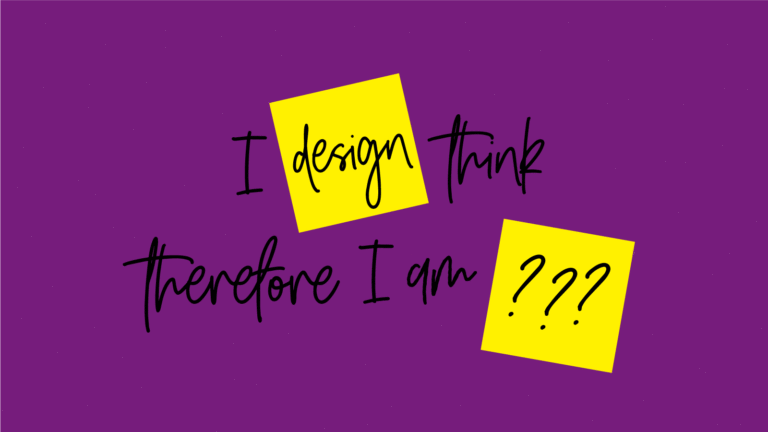I was talking with a teacher friend recently who asked for an ‘expert opinion’ on the rebrand of her educational institution. I could tell she wasn’t that happy about it. We chatted some more and it became apparent that it wasn’t the visual outcome that she was unhappy with – although it wasn’t great – it was the fact that she felt like she wasn’t consulted. No one had bothered to seek out her input.
That’s a big deal. Especially for someone who has worked at an institution for some time. I could tell by the way she was talking that the place really matters to her. She enjoys her work and is passionate about the difference they make. So to walk in one day and be told of brand new direction for the future would be a pretty rude shock.
This got me to thinking about other instances where I’ve seen brand evolutions or complete rebrands suffer difficult beginnings or at worst fall completely flat. There are many. Here are three mistakes that are avoidable.
- Failure to engage stakeholders.
- No real reason to change.
- Lacking authenticity.
1. Failure to engage stakeholders.
A stakeholder is essentially anyone with a vested interest in the future success of an institution or organisation. Why should we care about stakeholders when it comes to evolving a brand? They’re the biggest brand ambassadors, that’s why. If they’re not on the brand bus when it sets off, then you may struggle to get them onboard at all.
Bad stakeholder engagement can result in resistance to change, fragmentation, unwanted friction, haters hating and at very worst, jumping ship. The last thing anyone needs is resistance to change from within. If there is resistance to the very idea of change, it is most likely backed with a good reason why. Best to get this out in the open early, to avoid backlash later on.
Good stakeholder engagement opens the door to positive engagement. It fosters ownership which leads to smoother transitions.
Not all stakeholders will care enough to be involved and that’s ok. Those who do care (like my friend above) simply need their voice to be heard. To be given the opportunity to help shape the future vision. Not have it handed to them on a branded cupcake on launch day. This kind of surprise hardly ever goes down well.
What’s the best way to seek stakeholder input? Simple. Start the conversation and be prepared to listen. Stakeholders are just humans after all. Give them ample opportunity to contribute early and often. It adds value in many ways. It widens research efforts, untaps new ideas, uncovers unique perspectives, and provides much needed validation to any existing thoughts.
Stakeholder engagement should never be seen as something that stifles progress. Done correctly it is a vital step in shaping the next stage of any brand evolution. Do it early in the piece to help grease the wheels of change.
2. No real reason to change.
To the outside world a brand evolution or complete rebrand sends a very strong signal of change. So there better be a damn good reason for change in the first place. Not simply – “we need a new logo”. We hear this far too often. On further investigation new logo requests are often linked to a change in personnel. Like the newly appointed CMO wanting to make their mark, or the retiring CEO who feels the need to leave a legacy. Not a strong enough reason in my opinion…
Unless underpinned by deeper strategic motivations (or your current logo is ghastly), a new logo for the sake of something different is not much more than an exercise in pure aesthetics – and pretty much a waste of time. A new logo alone won’t change much apart from the sign on the front door.
So why rebrand at all? Brands aren’t forever. Like anything they need to move with the times and respond to culture. Successful brand transformations happen in response to a significant challenge or opportunity. Not for the sake of it.
If the case for change is absolutely imperative, a strategic rebrand provides the perfect opportunity to redefine who you are, and who you are for. The process can help revitalise internal flatness and reset the game plan in order to move onwards and upwards. When done for the right reasons it can help strengthen market positioning and inspire new growth. Done for the sake of it – and you might end up like these guys.
3. Lacking authenticity.
For the sake of this story we will call these guys Brand X — a quality tertiary education provider with a long and rich history.
Continued growth had enabled them to build a diverse offering of courses and qualifications across a multitude of industries. However like all traditional education providers, they were sensing the changes and challenges in the future of education and work. They wanted to get on the front foot with a new name, new story and new look and feel. A rebrand.
Market research was collected and analysed in detail until what looked like a unique opportunity had emerged: no-one in the competitive landscape was ‘owning’ the technology and innovation space. To Brand X, this seemed like a perfect point of difference to lay claim to.
Brand specialists were invited to design a series of logo concepts representing the new story of technology and innovation, followed by a survey to decide which option best represented the new market position. Results came back mixed with no clear winner. Confusion and uncertainty set in. Perhaps we need different logo options they thought.
This is when our phone rang. After a quick discussion we could see what was potentially at play, so we asked for the opportunity to talk to staff and students to see how the people who lived and breathed Brand X felt about the claim of being the home to innovation and technology. Long story short it wasn’t resonating with either. It didn’t feel believable.
Most of the people we interviewed had a hard time defining what innovation truly was, let alone what it meant to them personally. It was evident that they didn’t see themselves as owning the innovation space. Sure stories of innovation were happening daily around campus – but was it something that Brand X could own? Not right now. As one executive staff member put it “innovation is something to be known for, not to lay claim to”. Result? The rebrand went on hiatus. A very smart move.
Lesson learnt – don’t try and be something you’re not. Be you. Be authentic.
Where do you find authenticity? It comes from looking within – not from looking outwards. If it connects truthfully on the inside then it will resonate on the outside. It’s in there somewhere. A good brand evolution process will bring it to the surface.
Time for a change?
In reality a brand should always be evolving to keep up with the speeds of culture. If it’s high time for a big change then here’s a few things we’ve learnt along the way.
Engage stakeholders early and often: Consider who the change is for and start a conversation with them. They might just know a whole bunch of stuff that you don’t.
Have a good reason to change: Make sure there is a relevant reason for change, backed by a solid strategic motivation. Not just change for change’s sake.
Be authentic: When exploring your new identity and brand story be sure that you’re comfortable in your new threads and they are true to who you are.
How are we going?
We’ve been producing the Alto report for almost one year now, and we’d love to know how you’re finding it. To help us keep improving what we do, shoot us a email and let us know what you’d like more of, less of, or would like to see in the future.




